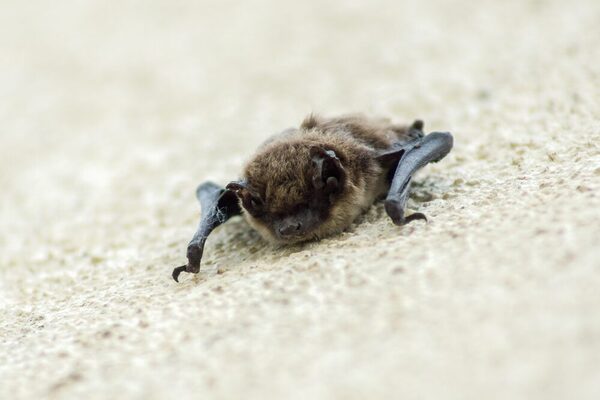Environmental tip July: Help for the goblins of the night - how to help bats in summer
Bats are fascinating, protected animals. But the goblins of the night suffer from a lack of housing and food. We provide tips on how you can easily help the secret hunters of the night - whether in your own garden, around the house or if you find an animal in need of help.
Bats can be found almost everywhere. There are more than 1,400 bat species worldwide. Around 25 species also play an important role as insectivores in the food chain in domestic ecosystems. However, many of them are threatened with extinction. And they have hardly any natural enemies. The negative consequences of intensive agriculture and forestry as well as the destruction of their natural habitats by humans are causing problems for these skillful fliers. Even small measures that everyone can easily implement in everyday life can contribute to their protection.
Provide shelter
The preservation of natural roosts is a top priority for the protection of bats. Only a few species, which are also found in urban areas, accept artificial roosts to support their populations.
- Preserve and protect old trees, they provide natural roosts.
- Ensure access to old cellars or potato huts, which are often used as winter roosts.
- When building or renovating a house, preserve bat roosts in the garden or on the house.
- Integrate bat boxes that can be installed directly into the façade (see brochure from the Wiesbaden environmental consultancy "Artenschutz bei Bauvorhaben").
- Hang up bat boxes, preferably several, as bats change roosts very often.
Securing garden habitats and food
In order for bats to be able to use residential areas as a habitat, not only is a roost required, but there must also be an appropriate food supply. The more species-rich the garden, the more insects, the bats' food source, can be found there.
- Choose night-flowering plants, e.g. phlox and evening primrose, which attract moths - the favorite food of many bats.
- Avoid insecticides and other poisons in the garden.
- Reduce lighting at night, light disturbs orientation and foraging.
- Create a pond, the water attracts many insects.
- Provide water points, especially important in hot summers.
Watch out for heat traps - danger in summer
Bats like to be warm and protected from draughts. In the cool spring, they therefore often choose hiding places that warm up quickly, for example under roof tiles and behind wooden cladding. On very hot summer days, these areas heat up considerably: Temperatures of 40 degrees are not uncommon, often even rising above 60 degrees.
As bats sleep during the day, they suffer particularly in these overheated roosts. To escape the heat, they try to move to cooler areas. In doing so, young animals can fall out of the roost or flee to the apartments below.
What you can do if you find a bat:
- Carefully secure the animal: Only ever handle bats with thick gloves and very carefully so as not to injure the animals! Bats can also bite out of fear. A cardboard box is suitable for temporarily keeping the animals safe.
- Choose a cool, safe place: Put the cardboard box in a shady, cat-proof place or place the bat on a shady tree.
- Offer water: Using a pipette or teaspoon, carefully give water to the edge of the mouth.
- Do not release immediately: Leave the animal in the box until dusk and only then release it.
- If unsure, get help: Contact a local animal rescue or bat rescue center.
Questions about bat protection?
The Wiesbaden Environmental Advisory Service and the Lower Nature Conservation Authority will be happy to advise you. Further information on how you can help bats and what to look out for in a bat box can be found in the flyer "Bats need protection" from the Wiesbaden Environmental Advisory Service.
Further information
- Bats need protection, tips on bat boxes, leafletPDF-File1,91 MB
- Species protection for construction projects (2023)PDF-File9,39 MB
- Bats as heat victims - NABU (Nature and Biodiversity Conservation Union) e.V. (opens in a new tab)
- Bat found: What now? - LBV (State Association for Bird and Nature Conservation in Bavaria) (opens in a new tab)
- NABU bat telephone and FAQs (opens in a new tab)
Contact us
Environmental store
Address
65185 Wiesbaden
Postal address
65029 Wiesbaden
Arrival
Notes on public transport
Public transportation: Luisenplatz stop.
Telephone
- +49 611 313600
- +49 611 313957
Opening hours
- Monday, Tuesday, Friday Saturday: 10 a.m. to 2 p.m.
- Wednesday, Thursday: 1 to 6 p.m.
